Abstract
OBJECTIVES. Many contextual analyses that bridge the micro-level-macro-level gap in identifying risk factors for adverse outcomes have not used methods appropriate for multilevel data. The purpose of this paper is to illustrate the application of appropriate multi-level analytic methods and discuss their implications for public health. METHODS. A previously published individual-level model of physical violence perpetrated by male partners during the childbearing year was reanalyzed to include variables describing the neighborhoods where the women resided. Logistic regression with estimation methods of the generalized estimating equation was used for the contextual analysis. To assess the advantages of the generalized estimating equation over conventional logistic regression, both were used for the two-level model. RESULTS. The regression coefficients from the contextual model differed from the betas obtained in the individual-level model. Not only were neighborhood-level variables related to the risk of partner-perpetrated violence, but the presence of these macro-level variables in the models modified the relationships of the individual-level variables to the risk of violence. CONCLUSIONS. Two-level models that include individual- and community-level factors may be beneficial for purposes of explanation in public health research.
Full text
PDF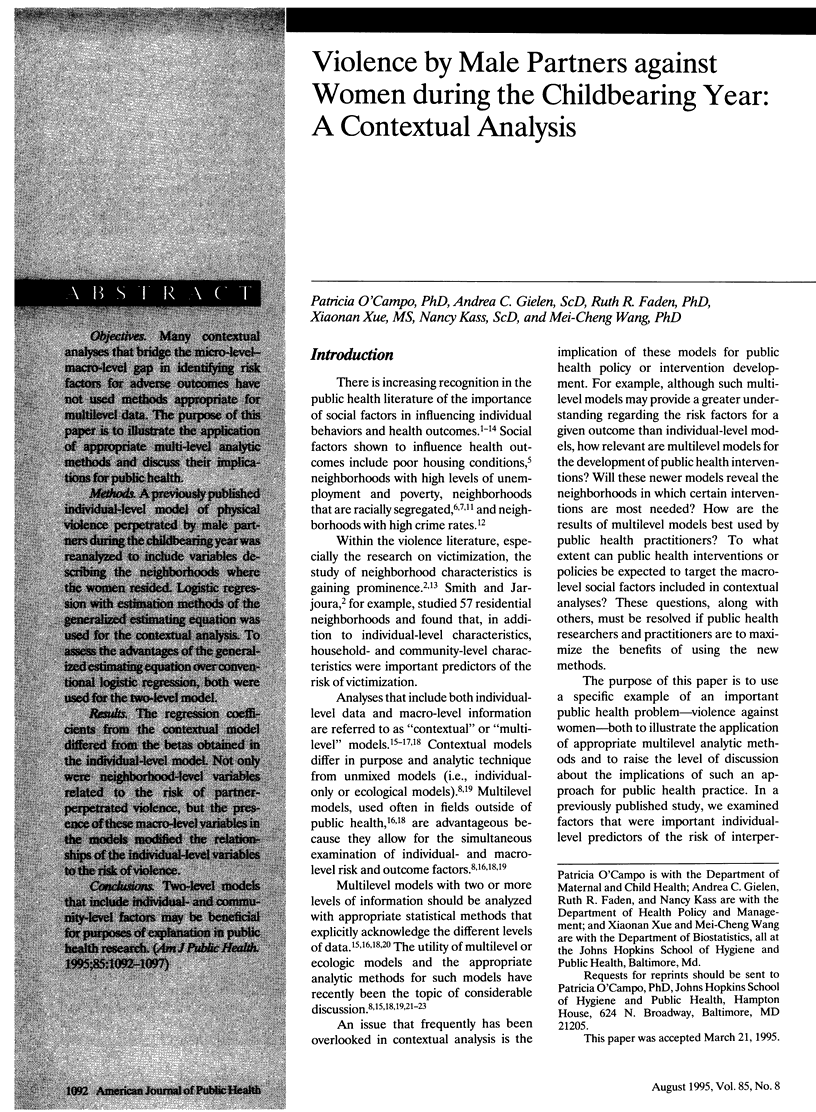
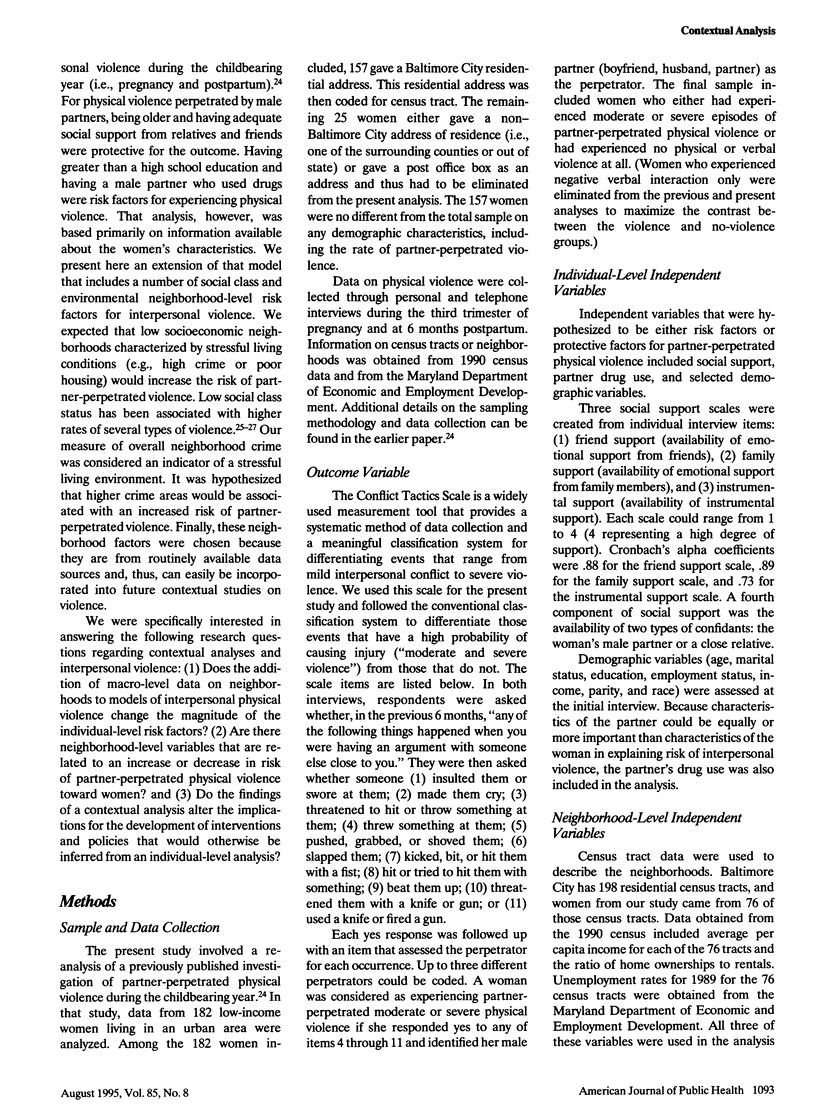
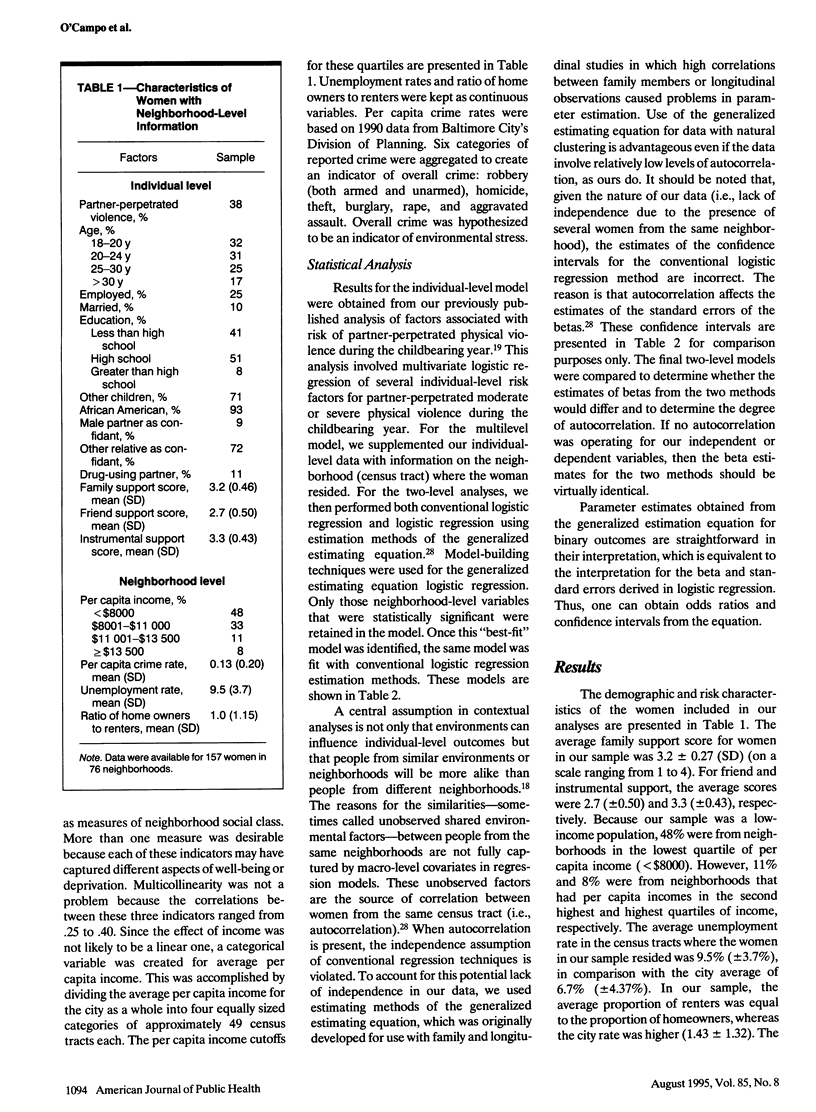

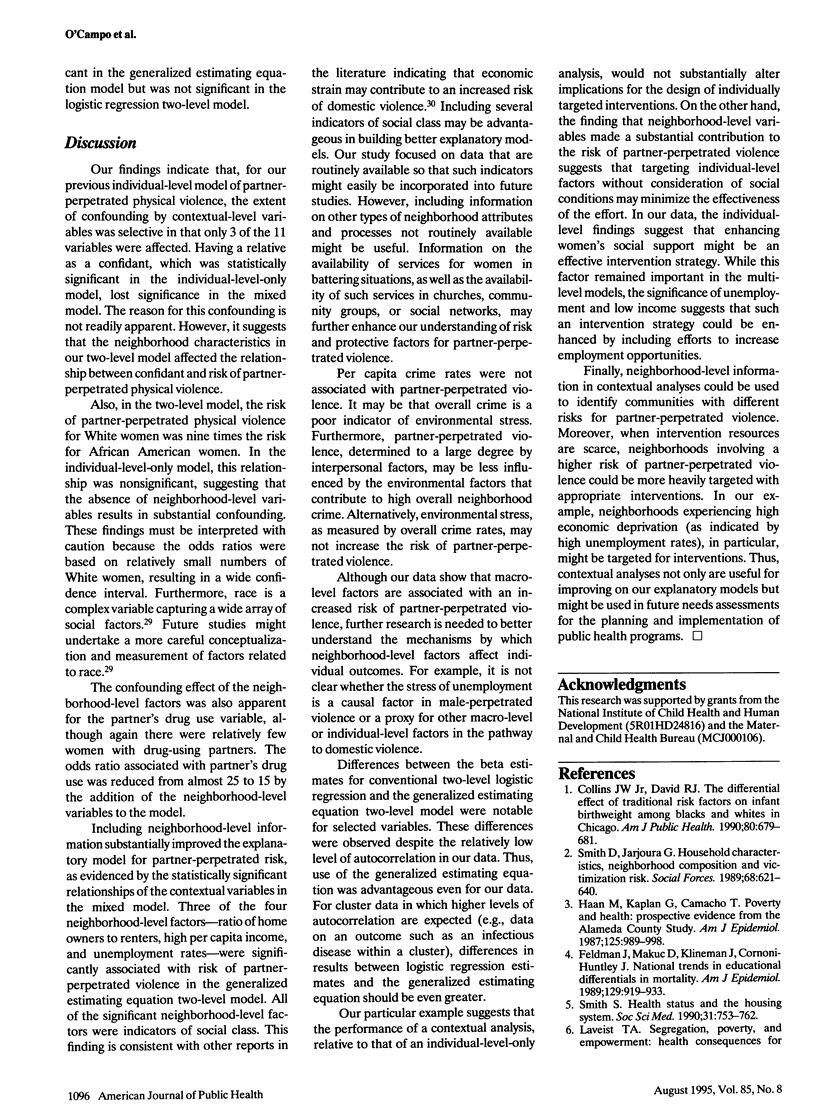
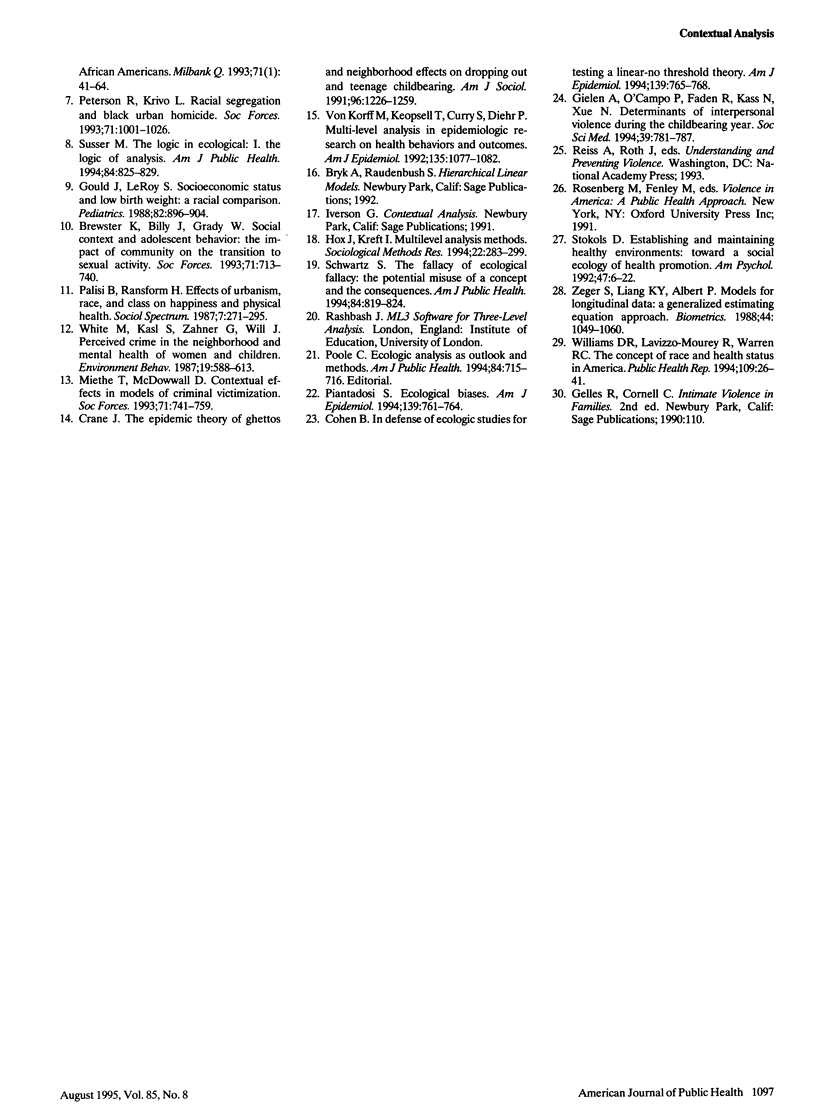
Selected References
These references are in PubMed. This may not be the complete list of references from this article.
- Cohen B. L. Invited commentary: in defense of ecologic studies for testing a linear-no threshold theory. Am J Epidemiol. 1994 Apr 15;139(8):765–771. doi: 10.1093/oxfordjournals.aje.a117071. [DOI] [PubMed] [Google Scholar]
- Collins J. W., Jr, David R. J. The differential effect of traditional risk factors on infant birthweight among blacks and whites in Chicago. Am J Public Health. 1990 Jun;80(6):679–681. doi: 10.2105/ajph.80.6.679. [DOI] [PMC free article] [PubMed] [Google Scholar]
- Feldman J. J., Makuc D. M., Kleinman J. C., Cornoni-Huntley J. National trends in educational differentials in mortality. Am J Epidemiol. 1989 May;129(5):919–933. doi: 10.1093/oxfordjournals.aje.a115225. [DOI] [PubMed] [Google Scholar]
- Gielen A. C., O'Campo P. J., Faden R. R., Kass N. E., Xue X. Interpersonal conflict and physical violence during the childbearing year. Soc Sci Med. 1994 Sep;39(6):781–787. doi: 10.1016/0277-9536(94)90039-6. [DOI] [PubMed] [Google Scholar]
- Gould J. B., LeRoy S. Socioeconomic status and low birth weight: a racial comparison. Pediatrics. 1988 Dec;82(6):896–904. [PubMed] [Google Scholar]
- Haan M., Kaplan G. A., Camacho T. Poverty and health. Prospective evidence from the Alameda County Study. Am J Epidemiol. 1987 Jun;125(6):989–998. doi: 10.1093/oxfordjournals.aje.a114637. [DOI] [PubMed] [Google Scholar]
- Piantadosi S. Invited commentary: ecologic biases. Am J Epidemiol. 1994 Apr 15;139(8):761–771. doi: 10.1093/oxfordjournals.aje.a117070. [DOI] [PubMed] [Google Scholar]
- Poole C. Ecologic analysis as outlook and method. Am J Public Health. 1994 May;84(5):715–716. doi: 10.2105/ajph.84.5.715. [DOI] [PMC free article] [PubMed] [Google Scholar]
- Schwartz S. The fallacy of the ecological fallacy: the potential misuse of a concept and the consequences. Am J Public Health. 1994 May;84(5):819–824. doi: 10.2105/ajph.84.5.819. [DOI] [PMC free article] [PubMed] [Google Scholar]
- Smith S. J. Health status and the housing system. Soc Sci Med. 1990;31(7):753–762. doi: 10.1016/0277-9536(90)90170-w. [DOI] [PubMed] [Google Scholar]
- Stokols D. Establishing and maintaining healthy environments. Toward a social ecology of health promotion. Am Psychol. 1992 Jan;47(1):6–22. doi: 10.1037//0003-066x.47.1.6. [DOI] [PubMed] [Google Scholar]
- Susser M. The logic in ecological: I. The logic of analysis. Am J Public Health. 1994 May;84(5):825–829. doi: 10.2105/ajph.84.5.825. [DOI] [PMC free article] [PubMed] [Google Scholar]
- Von Korff M., Koepsell T., Curry S., Diehr P. Multi-level analysis in epidemiologic research on health behaviors and outcomes. Am J Epidemiol. 1992 May 15;135(10):1077–1082. doi: 10.1093/oxfordjournals.aje.a116207. [DOI] [PubMed] [Google Scholar]
- Williams D. R., Lavizzo-Mourey R., Warren R. C. The concept of race and health status in America. Public Health Rep. 1994 Jan-Feb;109(1):26–41. [PMC free article] [PubMed] [Google Scholar]
- Zeger S. L., Liang K. Y., Albert P. S. Models for longitudinal data: a generalized estimating equation approach. Biometrics. 1988 Dec;44(4):1049–1060. [PubMed] [Google Scholar]


